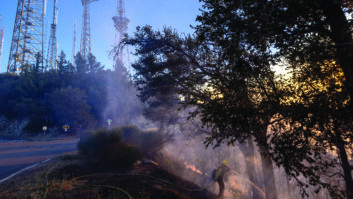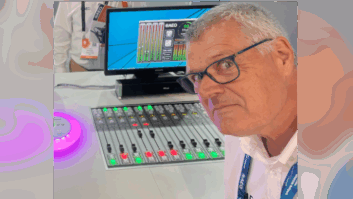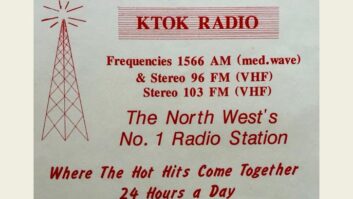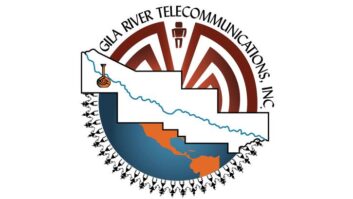This article has been updated to utilize additional information.
What does the recent low-power FM filing — the one that objected to nearly 1,000 applications by full-power stations seeing extend their coverage with repeater stations — mean for low-power stations and those whose application has been flagged as objectionable?
It depends on who you ask, although reactions to the filing have been swift and decisive.
On May 16, three organizations, Center for International Media Action, Common Frequency and the Prometheus Radio Project, filed objections to 998 applications by full-power stations that are seeking to extend their coverage with repeater stations. According to the groups, the Federal Communications Commission has not upheld its duty to be serve as a referee between the interests of stations looking to extend coverage with repeaters and new LPFMs looking to get a start in broadcasting.
[Read: LPFM Advocates File Objections to Nearly 1,000 Applications]
The groups said the FCC has informally sanctioned the practice of allowing translators to short-space existing LPFM facilities — to allow translator proposals to be spaced shorter than what LPFM services are allowed to do — without legally testing the issue.
“This, by definition, affords a higher status to translators,” the groups said in their filing. The groups said this is in direct violation of the 2011 Local Community Radio Act (LCRA), which was designed to ensure that urban areas had opportunities for both LPFM and translator applications, the groups said in their filing.
Reactions to the filing have been sharp.
“I have a hard time believing that the FCC overlooked the LCRA in all four AM revitalization FM translator windows,” said one engineer. “It is very likely that what occurred took place after careful consideration of the requirements of the LCRA, and that will all come out at some point.”
In the meantime, however, this engineer thinks it likely that the Prometheus filing will “throw a monkey wrench into the works.”
“[This will] cause a suspension of processing of all as-yet ungranted Window 3 and 4 translator applications, which will do considerable harm to AM radio stations and the industry as a whole,” he said.
One advocacy group called the move “well intended [but] poorly executed.”
REC Networks said it agrees with many of the positions raised by Prometheus, Common Frequency and the Center for International Media Action in its information objection filed with the FCC. “Prometheus et al does raise some interesting issues that require consideration,” said REC founder Michelle Bradley, including the notion that licensing decisions should be based on the needs of the local community, and that translators, boosters and LPFM must remain equal in status.
REC and Prometheus et al are also close in agreement on underlying issues, she said, including the fact that the LCRA is still in effect and that in implementing the 2017 and 2018 cross-service windows, the LCRA may have been violated.
“Where we have a serious conflict with Prometheus et al was the execution of the nearly one thousand informal objections that were filed against applications, including those that were not even accepted for filing,” she said.
Community Radio is more than just noncommercial stations; there are many mom and pop operators in rural areas with tiny contours that serve their communities with local news, sports and personalities, Bradley said.
“These are not iHeart or Cumulus. These are stations that have been in the family for generations and with the increase in electronic devices, switching power supplies and increased interference from Cuba and IBOC, these stations are in serious trouble, even during the daytime.
“What gives Prometheus et al the right to hold the livelihood of these stations hostage to promote a valid agenda using a very improper method?” she said. “Instead of filing against the translator proposals that would cause these LPFM short spacing, they decided to arbitrarily file against any translator application with a pulse.
“Prometheus et al, please do the right thing and gracefully withdraw this [informal objection].”
Others see an outright abuse of the system.
“The LPFM mass filing of informal objections against pending FM translator applications is an abuse of FCC processes,” said John Garziglia, a partner with Womble Bond Dickinson in Washington — in part because LPFM proponents are well aware that it is FCC staff policy not to process an application that has an unresolved objection pending against it.
The LPFM argument, however, is not with the FM translator applications, he said.
“It is rather with the FCC’s underlying settled rules and policies. They know that the FM translator applications will be held hostage to the LPFM proponents’ issues if the FCC accords the mass Informal Objections cognizance, he said.
Though LPFM proponents claim that LPFMs and FM translators are not being treated equally — that not enough spectrum is being made available for LPFMs — this ignores that two LPFM filing windows opened long before the filing of the now-pending AM revitalization FM translator applications, Garziglia said.
Others see the filing in a different light.
“While we support their goal to protect equal access to spectrum by LPFM as well as translators, CCB [Christian Community Broadcasters] opposes the coalition’s ‘broad swath,’ which indiscriminately opposed all translator applications,” said John O. Broomall, Sr. with CCB, Canton, Ga., which was not part of the coalition that prepared the objections.
“Many broadcasters do not realize that LPFMs can own two translators and thus LPFM advocates are not ‘anti-translator,’ he added. “Translator windows in recent years have been for AM broadcasters only, thus LPFM operators who want to expand their coverage would need to purchase translator CPs or licenses, which are now prohibitively expensive.”
However, he said, “LPFM advocates and operators know that low-power FM is secondary to full-power FM.”
LPFM is supposed to be co-equal to translators yet translators have power and coverage advantages, Broomall said, pointing to situations where some translators are rated at 250 watts while LPFMs are limited to 100 watts — with power as low as 1 watt if their antenna is atop a mountain or otherwise high above average terrain. Also, with rare exceptions, low-power broadcasters must use omnidirectional patterns while translators can use virtually any directional pattern to squeeze into tiny spectrum holes, Broomall said.
What’s next? It’s possible the FCC may move to deny the objections, Garziglia said, by ruling that they fail to state a legal or factual basis for a denial of any of the referenced FM translator applications.
“If the LPFM informal objections are quickly denied, then FCC’s Audio Division may continue its superb job of expeditiously acting on pending FM translator applications,” he said. “AM stations who are in full compliance with existing FCC rules — pursuing FM translators as lifelines — should not suffer because LPFM proponents think there should be fewer commercial radio stations and more LPFM stations.
“Hopefully, the FCC chairman will take rapid steps to summarily dismiss the mass informal objections against the hundreds of currently pending FM translator applications,” he said.
Added the industry radio engineer: “The clock is ticking on a lot of struggling AM stations, and providing them with an FM signal in their local area would in many cases be the shot in the arm that would keep them viable,” he said.
“That rescue may well be in jeopardy now. How can that be in the public interest?”
Common Frequency, the Prometheus Radio Project and the Center for International Media are calling for all applicants listed in the filing to confirm that their engineering requests meet the demands of the LCRA or be subject to dismissal or rescindment. The applicants are listed in in Appendix A of the groups’ filing, and include applicants from all over the contiguous United States as well as Alaska, Hawaii and Puerto Rico.







